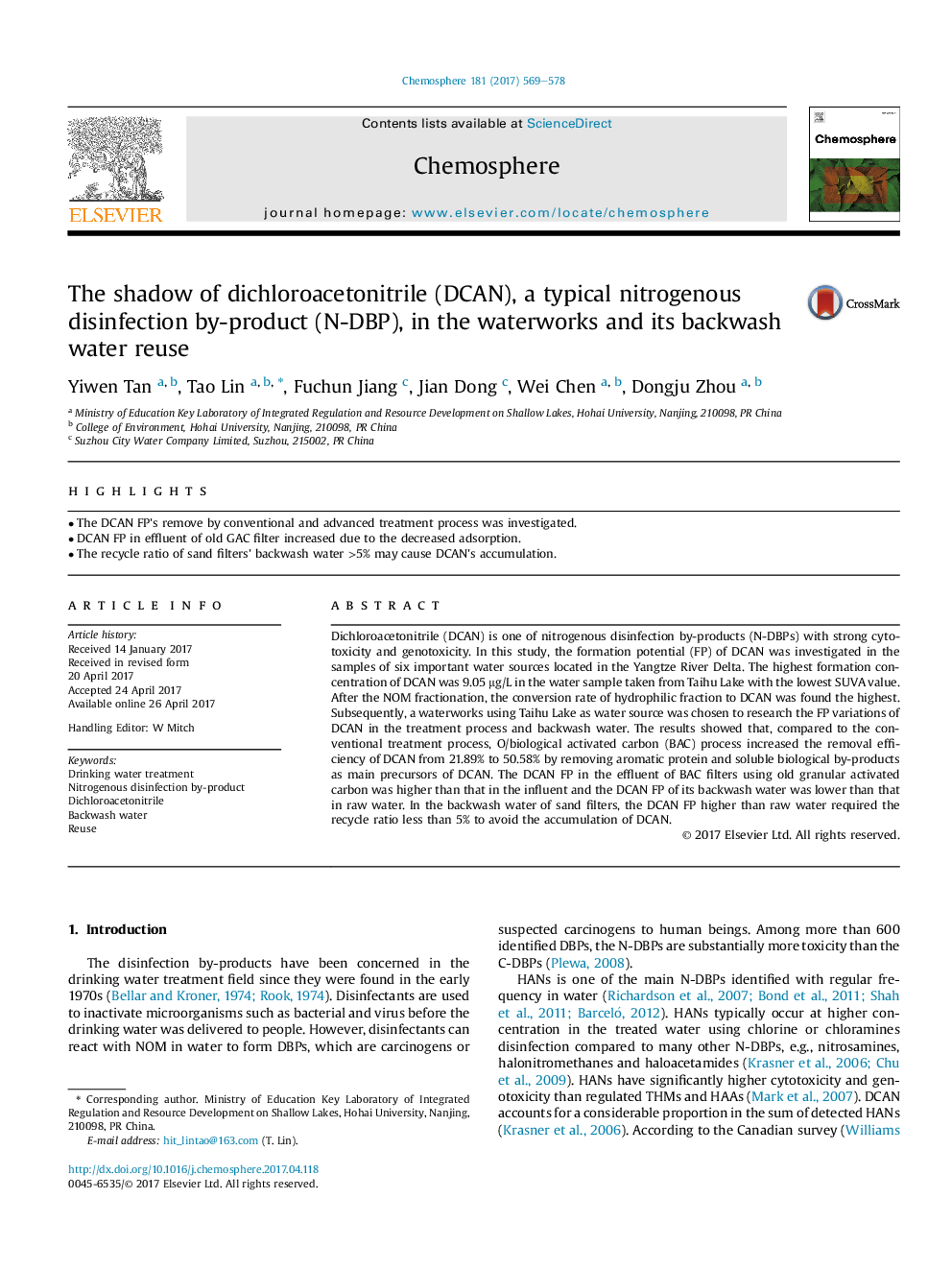| Article ID | Journal | Published Year | Pages | File Type |
|---|---|---|---|---|
| 5747202 | Chemosphere | 2017 | 10 Pages |
â¢The DCAN FP's remove by conventional and advanced treatment process was investigated.â¢DCAN FP in effluent of old GAC filter increased due to the decreased adsorption.â¢The recycle ratio of sand filters' backwash water >5% may cause DCAN's accumulation.
Dichloroacetonitrile (DCAN) is one of nitrogenous disinfection by-products (N-DBPs) with strong cytotoxicity and genotoxicity. In this study, the formation potential (FP) of DCAN was investigated in the samples of six important water sources located in the Yangtze River Delta. The highest formation concentration of DCAN was 9.05 μg/L in the water sample taken from Taihu Lake with the lowest SUVA value. After the NOM fractionation, the conversion rate of hydrophilic fraction to DCAN was found the highest. Subsequently, a waterworks using Taihu Lake as water source was chosen to research the FP variations of DCAN in the treatment process and backwash water. The results showed that, compared to the conventional treatment process, O/biological activated carbon (BAC) process increased the removal efficiency of DCAN from 21.89% to 50.58% by removing aromatic protein and soluble biological by-products as main precursors of DCAN. The DCAN FP in the effluent of BAC filters using old granular activated carbon was higher than that in the influent and the DCAN FP of its backwash water was lower than that in raw water. In the backwash water of sand filters, the DCAN FP higher than raw water required the recycle ratio less than 5% to avoid the accumulation of DCAN.
